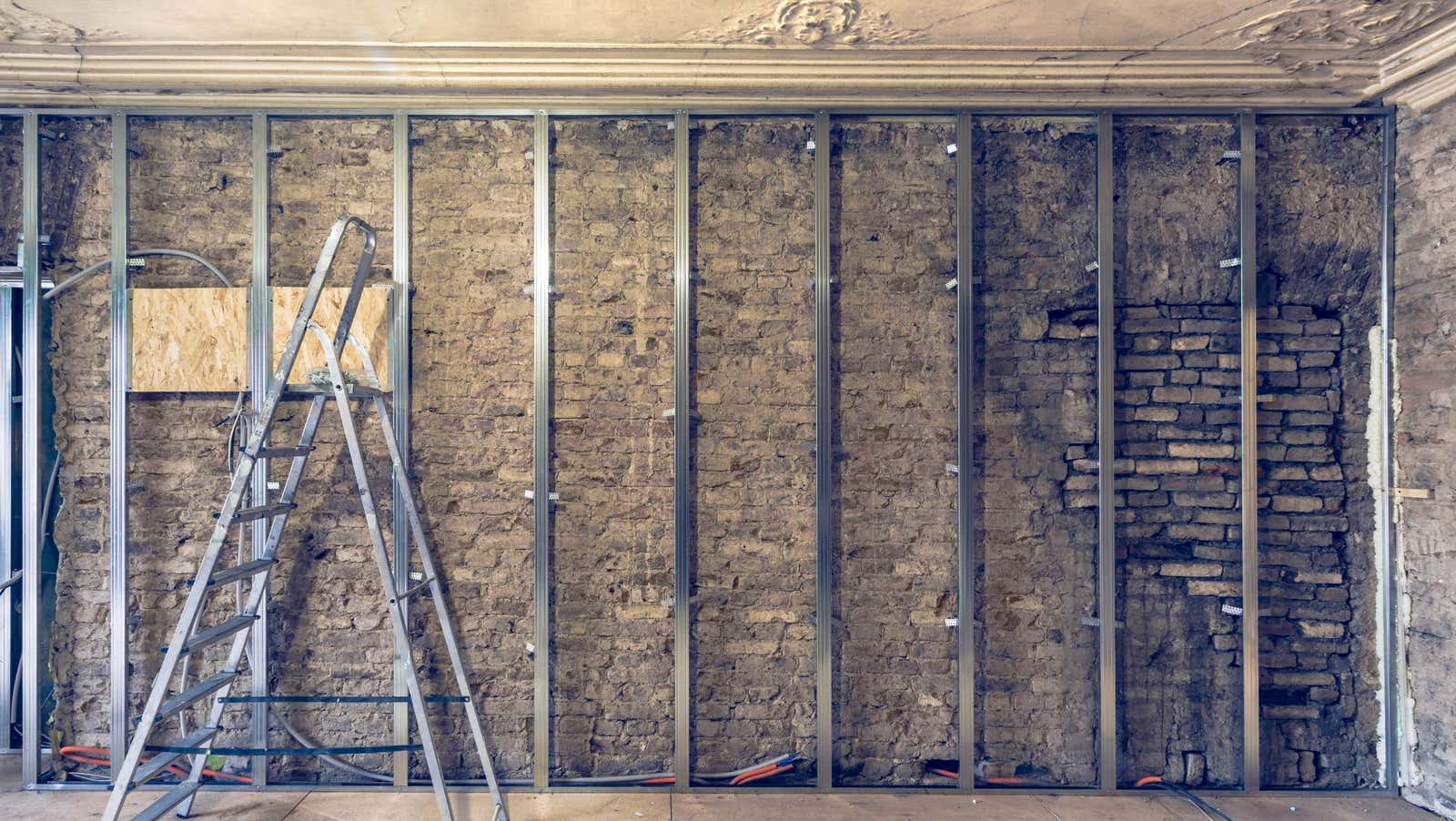How to Identify a Load-Bearing Wall

For some reason, a lot of people still love open floor plans and they don’t seem to be going anywhere . It’s okay if you’re building a new home or moving into a home built in the past 25 years or so, but old homes get a little more complicated .
In fact, it is impossible to achieve this look in many older homes without removing a few walls. Since some of these walls can support the rest of the home, it is important to understand how load-bearing walls work and be able to identify them.
It is not always easy to tell if a wall can be demolished by looking at it. New homes or those that have previously undergone structural renovations – such as adding or removing rooms – are especially difficult to decipher, so it is always advisable to consult with an architect or engineer before actually picking up a sledgehammer. (Permits may also be required, so check with your local building administration as well.)
Of course, there are many reasons why you might have an idea of what walls might be load-bearing, even before you call a professional . Here are a few things that might help.
Understand the structure
A load-bearing wall actually carries the weight of your home, from the roof and upper floors to the foundation. (The weight that is carried down at any point in the house is called the “load”, hence the “load-bearing walls”). Because this weight is carried from one level of the house to the next, load-bearing walls are usually directly on top of each other on each floor. Exterior walls are always load-bearing, and if there is a previous addition, some of the external walls may now look like internal walls, but they are almost certainly still load-bearing.
Start from the foundation
In a home with an unfinished basement, looking for beams – usually a metal I-beam or multi-layer wood beam – is a good indicator of where the weight of the house is based. Walls directly above these beams (and any walls directly above these walls) are likely load-bearing.
Look at the floor beams
If you can see floor beams from the basement to the second floor or from the attic to the lower floor, mark their direction. The load-bearing wall will often be perpendicular to the floor joists. For more information on floor joists and what they do, here’s Bob Vila:
If you see a wall that seems to support the intersection of the beams at any point, that wall is probably load-bearing as well. (Not all walls perpendicular to the floor joists are load-bearing, and a load-bearing wall can occur where there is no intersection of the beams, so it is important to look at the overall structure of the floor.)
See above
If a wall does not have walls, pillars, or other supports directly above it, it is much less likely to be load-bearing. This is also true when searching in the attic. If you have an unfinished loft but can see knee walls (walls below 3 feet, supporting rafters), they are probably right above the load-bearing wall as well.
Here’s a great example of how to look at all of these different clues to determine if a wall is load-bearing:
And if you decide to remove the wall yourself, here’s some additional background:
For those of us who don’t do structural calculations every day, this is not an exact science, but understanding the principles behind structural walls can help determine when to turn to professionals.
This story was originally published in August 2014 and was updated in December 2020 to perform editing, add a new photo to the title, and align the content with the current Lifehacker style, and was also updated on March 18, 2021 with new links.